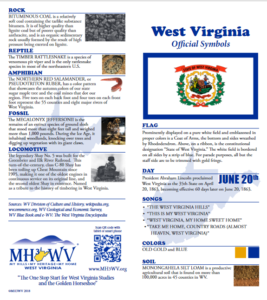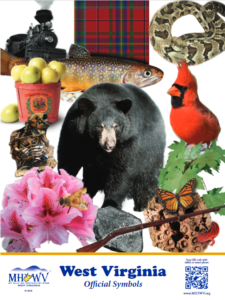West Virginia State Symbols
West Virginia Studies

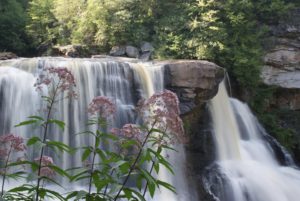
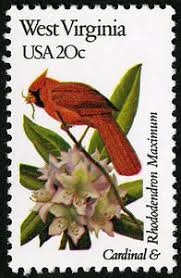
Official West Virginia State Symbols
<< Here are the topics on this page; Click to jump/scroll down >>
WEST VIRGINIA STATE SYMBOLS BROCHURE/BOOKMARK
Print your own Official West Virginia State Symbols Brochure/Bookmark
- Open the pdf by clicking on either image above (If you need an Adobe PDF viewer, download it here
 You may want to uncheck the boxes for optional McAfee software)
You may want to uncheck the boxes for optional McAfee software) - Click the “printer” icon at the top of the pdf
- For one-sided printing, print both pages, then tape or paste them together, back-to-back.
- For two-sided printing, print page 1 only, turn over the page (side-to-side, not top-to-bottom) and reinsert it into the printer. Then print page 2.
- Trim off any excess paper. Fold down the middle with the West Virginia Flag on the outside. Now you have a West Virginia State Symbols brochure. You can even use it as a bookmark!
WEST VIRGINIA STATE SYMBOLS POSTER
Print your own Official West Virginia State Symbols Mini-Poster
- Open the pdf by clicking on the poster above (If you need an Adobe PDF viewer, download it here
 You may want to uncheck the boxes for optional McAfee software.)
You may want to uncheck the boxes for optional McAfee software.) - Click the “printer” icon at the top of the pdf
“State ____: Mountain State Has Many More Official Symbols”
June 15, 2013
![]() Additional information about State Flag, Bird, Tree, Fruit, Butterfly, Rock, Soil, Firearm, Colors, and Tartan. [This link is also included in each of the corresponding State Symbols section below.]
Additional information about State Flag, Bird, Tree, Fruit, Butterfly, Rock, Soil, Firearm, Colors, and Tartan. [This link is also included in each of the corresponding State Symbols section below.]
WEST VIRGINIA OFFICIAL STATE SYMBOLS – West Virginia Blue Book
Explore West Virginia Blue Book’s “Section Eleven” that includes Official State Symbols
WEST VIRGINIA STATE FLAG
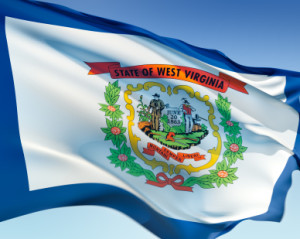 “Before the design of the present State Flag was officially adopted by the Legislature on March 7,1929, by Senate Joint Resolution No. 18, West Virginia had been represented by several flags which had proved impractical. Prominently displayed on the pure white field of today’s flag and emblazoned in proper colors is a Coat of Arms, the lower half of which is wreathed by Rhododendron. Across the top, lettered on a ribbon, is the constitutional designation-“State of West Virginia”. The white field is bordered on four sides by a strip of blue, and for parade purposes all but the staff side are to be trimmed with gold fringe.” — (WV Blue Book)
“Before the design of the present State Flag was officially adopted by the Legislature on March 7,1929, by Senate Joint Resolution No. 18, West Virginia had been represented by several flags which had proved impractical. Prominently displayed on the pure white field of today’s flag and emblazoned in proper colors is a Coat of Arms, the lower half of which is wreathed by Rhododendron. Across the top, lettered on a ribbon, is the constitutional designation-“State of West Virginia”. The white field is bordered on four sides by a strip of blue, and for parade purposes all but the staff side are to be trimmed with gold fringe.” — (WV Blue Book)
“State ____: Mountain State Has Many More Official Symbols”
![]() Additional information about State Flag, Bird, Tree, Fruit, Butterfly, Rock, Soil, Firearm, Colors, and Tartan.
Additional information about State Flag, Bird, Tree, Fruit, Butterfly, Rock, Soil, Firearm, Colors, and Tartan.
![]() March 7, 2019 – “Ninety years ago today the West Virginia Legislature adopted the familiar Montani Semper Liberi flag we know today as the official state flag. But getting to that official flag took more than 65 years from statehood in 1863. . .”
March 7, 2019 – “Ninety years ago today the West Virginia Legislature adopted the familiar Montani Semper Liberi flag we know today as the official state flag. But getting to that official flag took more than 65 years from statehood in 1863. . .”
Official West Virginia State Symbols
GREAT SEAL OF WEST VIRGINIA
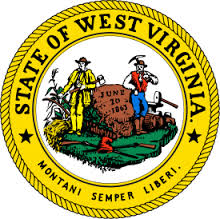
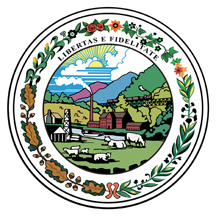 “The Great Seal of West Virginia, which also is the Coat of Arms, was adopted by the Legislature on September 26, 1863, and symbolizes the principal pursuits and resources of West Virginia. Described briefly, the obverse side of the Seal bears the legend, “State of West Virginia”, together with the motto, “Montani Semper Liberi” (Mountaineers Are Always Free); a farmer stands to the right and a miner to the left of a large ivy-draped rock bearing the date of the state’s admission to the Union, in front of the rock are two hunters’ rifles upon which rests a Phrygian Cap, or “Cap of Liberty”.
“The Great Seal of West Virginia, which also is the Coat of Arms, was adopted by the Legislature on September 26, 1863, and symbolizes the principal pursuits and resources of West Virginia. Described briefly, the obverse side of the Seal bears the legend, “State of West Virginia”, together with the motto, “Montani Semper Liberi” (Mountaineers Are Always Free); a farmer stands to the right and a miner to the left of a large ivy-draped rock bearing the date of the state’s admission to the Union, in front of the rock are two hunters’ rifles upon which rests a Phrygian Cap, or “Cap of Liberty”.
“The reverse side of laurel and oak leaves, log house, hills, factories and boats is the Governor’s official seal, and is not in common use today. It was intended to be employed when the seal was attached to documents by ribbons and suspended in the manner of a medal. Joseph H. Diss Debar, of Doddridge County, designed the state seal in 1863 at the request of the first West Virginia Legislature. The Constitution of West Virginia, Article 2, Section 7, provides that: “The present seal of the state, with its motto ‘Montani Semper Liberi,’ shall be the great seal of the State of West Virginia, and shall be kept by the secretary of state, to be used by him, officially as directed by law.”— (WV Blue Book)
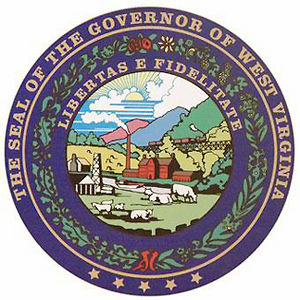
![]() March 17, 2013
March 17, 2013
“French immigrant Joseph H. Diss Debarr promoted WV, designed state seal.”
Explore scans of Charleston Gazette-Mail’s “West Virginia’s Seal of Approval” Article (pdf)
“Innovative Cheat River Canyon rail trestle earned spot on state seal”
Explore scans of Charleston Gazette-Mail’s “Innovative. . . ” Article (pdf)
Official West Virginia State Symbols
“MONTANI SEMPER LIBERI” – “MOUNTAINEERS ARE ALWAYS FREE”
The Official West Virginia State Motto
 “Montani Semper Liberi, Latin for “Mountaineers are Always Free,” is the official motto of the state of West Virginia. It was adopted as the official motto of the state in Article II, Section 2-7, of the state constitution signed in 1872. The phrase was suggested as the motto by Joseph H. Diss Debar, the artist who created the state’s great seal.” — (WV Blue Book)
“Montani Semper Liberi, Latin for “Mountaineers are Always Free,” is the official motto of the state of West Virginia. It was adopted as the official motto of the state in Article II, Section 2-7, of the state constitution signed in 1872. The phrase was suggested as the motto by Joseph H. Diss Debar, the artist who created the state’s great seal.” — (WV Blue Book)
Official West Virginia State Symbols
“THE WEST VIRGINIA HILLS” – “THIS IS MY WEST VIRGINIA” – “WEST VIRGINIA, MY HOME SWEET HOME” – “TAKE ME HOME, COUNTRY ROADS”
The Official West Virginia State Songs
“THE WEST VIRGINIA HILLS,” “THIS IS MY WEST VIRGINIA,” and “WEST VIRGINIA, MY HOME SWEET HOME” were designated as the official state songs of West Virginia, each ranking equally with the others in official status, by House Concurrent Resolution No. 19, adopted by the Legislature on February 28, 1963. “TAKE ME HOME COUNTRY ROADS” was designated an official state song by House Concurrent Resolution No. 40, adopted by the Legislature on March 8, 2014.” — (WV Blue Book)
<<Music, Lyrics and Video/Audio for West Virginia’s Official State Songs (and other West Virginia songs) are on the MH3WV “Music/Dance” page.>>
Official West Virginia State Symbols
OLD GOLD and BLUE
The Official West Virginia State Colors

 “OLD GOLD and BLUE were designated as Official State colors by Senate Concurrent Resolution No. 20, adopted by the Legislature on March 8, 1963.” — (WV Blue Book)
“OLD GOLD and BLUE were designated as Official State colors by Senate Concurrent Resolution No. 20, adopted by the Legislature on March 8, 1963.” — (WV Blue Book)
The colors, according to the widely used Pantone color matching system, are 124 and 286.
“State ____: Mountain State Has Many More Official Symbols”
![]() Additional information about State Flag, Bird, Tree, Fruit, Butterfly, Rock, Soil, Firearm, Colors, and Tartan.
Additional information about State Flag, Bird, Tree, Fruit, Butterfly, Rock, Soil, Firearm, Colors, and Tartan.
Official West Virginia State Symbols
JUNE 20
The Official West Virginia State Day
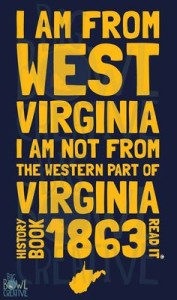 “On January 1, 1863, President Abraham Lincoln approved the Statehood Bill for West Virginia on the condition that it would gradually abolish slavery. West Virginia was proclaimed a State on April 20, 1863, with the bill becoming effective sixty days later on June 20, 1863. “West Virginia Day” became a legal holiday by Chapter 59, Acts of the Legislature, Regular Session, 1927. (Code 2-2-1)” — (WV Blue Book)
“On January 1, 1863, President Abraham Lincoln approved the Statehood Bill for West Virginia on the condition that it would gradually abolish slavery. West Virginia was proclaimed a State on April 20, 1863, with the bill becoming effective sixty days later on June 20, 1863. “West Virginia Day” became a legal holiday by Chapter 59, Acts of the Legislature, Regular Session, 1927. (Code 2-2-1)” — (WV Blue Book)
Official West Virginia State Symbols
SUGAR MAPLE
The Official West Virginia State Tree
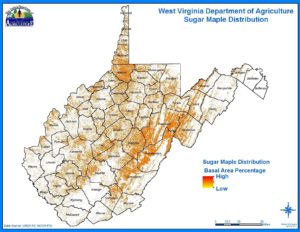
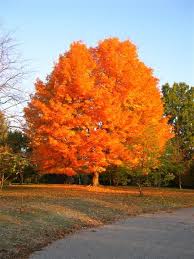
“The SUGAR MAPLE, or ACER SACCHARUM as it is known scientifically, was made West Virginia’s official tree by House Concurrent Resolution No. 12, adopted by the Legislature on March 7, 1949, authorizing a vote by pupils of public schools and civic organizations. It produces an excellent wood for furniture, as well as maple syrup. A single tree is 70 to 120 feet high and produces two to three pounds of sugar when “sugared off”; has a five-lobed leaf and produces a small wing-shaped pod.” — (WV Blue Book)
![]() “The sugar maple is one of America’s best-loved trees. In fact, more states have claimed it as their state tree than any other single species—those states being New York, West Virginia, Wisconsin and Vermont.”
“The sugar maple is one of America’s best-loved trees. In fact, more states have claimed it as their state tree than any other single species—those states being New York, West Virginia, Wisconsin and Vermont.”
Explore Arbor Day Foundation’s “Sugar Maple” Website — scroll down the page for more information
 “The sugar maple, West Virginia’s official state tree, stands out in the fall with its brilliant warm hues. The red maple may not share the same claim to fame as its cousin, but it, too, provides colorful foliage. West Virginia designated the sugar maple as the official state tree in 1949, after a vote by public school students and civic organizations. The tree is prevalent throughout the Mountain State.”
“The sugar maple, West Virginia’s official state tree, stands out in the fall with its brilliant warm hues. The red maple may not share the same claim to fame as its cousin, but it, too, provides colorful foliage. West Virginia designated the sugar maple as the official state tree in 1949, after a vote by public school students and civic organizations. The tree is prevalent throughout the Mountain State.”
“State ____: Mountain State Has Many More Official Symbols”
![]() Additional information about State Flag, Bird, Tree, Fruit, Butterfly, Rock, Soil, Firearm, Colors, and Tartan.
Additional information about State Flag, Bird, Tree, Fruit, Butterfly, Rock, Soil, Firearm, Colors, and Tartan.
Official West Virginia State Symbols
CARDINAL
The Official West Virginia State Bird
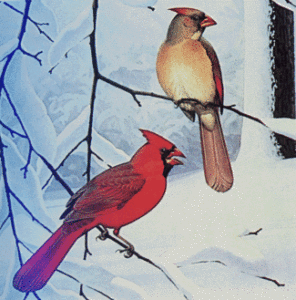
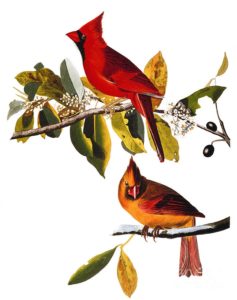 “The CARDINAL or RICHMONDENA CARDINALIS, as it is known scientifically, was made West Virginia’s official bird by House Concurrent Resolution No. 12, adopted by the Legislature on March 7, 1949, authorizing a vote by pupils of public schools and civic organizations. The male of the species is a rich scarlet with a mask and shading of black, while the young birds and females are a less brilliant color. The adult bird measures approximately eight inches long. It can be found from New York State to the Gulf of Mexico and as far west as Oklahoma.” — (WV Blue Book)
“The CARDINAL or RICHMONDENA CARDINALIS, as it is known scientifically, was made West Virginia’s official bird by House Concurrent Resolution No. 12, adopted by the Legislature on March 7, 1949, authorizing a vote by pupils of public schools and civic organizations. The male of the species is a rich scarlet with a mask and shading of black, while the young birds and females are a less brilliant color. The adult bird measures approximately eight inches long. It can be found from New York State to the Gulf of Mexico and as far west as Oklahoma.” — (WV Blue Book)
 “The male Northern Cardinal is perhaps responsible for getting more people to open up a field guide than any other bird. They’re a perfect combination of familiarity, conspicuousness, and style: a shade of red you can’t take your eyes off. Even the brown females sport a sharp crest and warm red accents. Cardinals don’t migrate and they don’t molt into a dull plumage, so they’re still breathtaking in winter’s snowy backyards. In summer, their sweet whistles are one of the first sounds of the morning.”
“The male Northern Cardinal is perhaps responsible for getting more people to open up a field guide than any other bird. They’re a perfect combination of familiarity, conspicuousness, and style: a shade of red you can’t take your eyes off. Even the brown females sport a sharp crest and warm red accents. Cardinals don’t migrate and they don’t molt into a dull plumage, so they’re still breathtaking in winter’s snowy backyards. In summer, their sweet whistles are one of the first sounds of the morning.”
Explore The Cornell Lab of Ornithology’s “All About Birds – Northern Cardinal” Website – includes tabs for Identification, Life, History, Sound and Video
![]() “The northern cardinal is so well loved that it has been named the official bird of no fewer than seven U.S. states. Bright red cardinals are easily identified by even casual bird watchers, and are often seen frequenting backyards and bird feeders. When foraging elsewhere the birds eat insects, seeds, grain, fruit, and sap.”
“The northern cardinal is so well loved that it has been named the official bird of no fewer than seven U.S. states. Bright red cardinals are easily identified by even casual bird watchers, and are often seen frequenting backyards and bird feeders. When foraging elsewhere the birds eat insects, seeds, grain, fruit, and sap.”
Explore information from National Geographic’s “Cardinal” Website – (pdf)
“State ____: Mountain State Has Many More Official Symbols”
![]() Additional information about State Flag, Bird, Tree, Fruit, Butterfly, Rock, Soil, Firearm, Colors, and Tartan.
Additional information about State Flag, Bird, Tree, Fruit, Butterfly, Rock, Soil, Firearm, Colors, and Tartan.
Official West Virginia State Symbols
RHODODENDRON MAXIMUM
The Official West Virginia State Flower
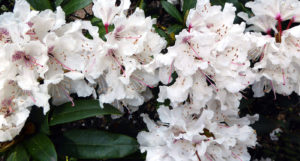
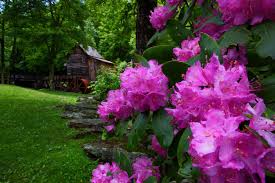 “The RHODODENDRON MAXIMUM or “Big Laurel” was made the official State Flower of West Virginia by House Joint Resolution No. 19, adopted by the Legislature on January 29, 1903, following a recommendation by the Governor and a vote by the pupils of public schools. It is a shrub of the heath family and may be recognized by its large evergreen leaves and delicate pale pink or white bloom, mottled with either red or yellow flecks.” — (WV Blue Book)
“The RHODODENDRON MAXIMUM or “Big Laurel” was made the official State Flower of West Virginia by House Joint Resolution No. 19, adopted by the Legislature on January 29, 1903, following a recommendation by the Governor and a vote by the pupils of public schools. It is a shrub of the heath family and may be recognized by its large evergreen leaves and delicate pale pink or white bloom, mottled with either red or yellow flecks.” — (WV Blue Book)
June 24, 2015
 “In 1901, records show the outgoing Governor George Atkinson praising the shrub’s attractive nature and ubiquitous presence: “I know none more beautiful and none more common in West Virginia, than the Rhododendron. It is found along most every vale and hillside, and is universally admired both for its beauty and fragrance”. Only a couple years after in 1903, lawmakers named the rhododendron West Virginia’s state flower after an overwhelming vote of the state’s school children in its favor along with the governor’s recommendation. . .”
“In 1901, records show the outgoing Governor George Atkinson praising the shrub’s attractive nature and ubiquitous presence: “I know none more beautiful and none more common in West Virginia, than the Rhododendron. It is found along most every vale and hillside, and is universally admired both for its beauty and fragrance”. Only a couple years after in 1903, lawmakers named the rhododendron West Virginia’s state flower after an overwhelming vote of the state’s school children in its favor along with the governor’s recommendation. . .”
 MOUNTAIN STATE FLORA: Rhododendron, Our State Flower”
MOUNTAIN STATE FLORA: Rhododendron, Our State Flower”
“Recently (2003), the beautiful and showy Rhododendron maximum celebrated the Centennial of its designation as West Virginia’s state flower. There are many names for this state treasure and member of the heath family that is characterized by its large dark evergreen leaves and delicate pale pink or white blooms. The many common names for this shrub include rosebay, rosebay rhododendron, big laurel, great laurel, great rhododendron and white rhododendron.”
![]() “In 1901, records show the outgoing Governor George Atkinson praising the attractive and ubiquitous flowering plant: “I know none more beautiful and none more common in West Virginia, than the Rhododendron.” Lawmakers named the Rhododendron West Virginia’s state flower in 1903 after an overwhelming majority vote of the state’s school children along with the Governor’s recommendation. . .”
“In 1901, records show the outgoing Governor George Atkinson praising the attractive and ubiquitous flowering plant: “I know none more beautiful and none more common in West Virginia, than the Rhododendron.” Lawmakers named the Rhododendron West Virginia’s state flower in 1903 after an overwhelming majority vote of the state’s school children along with the Governor’s recommendation. . .”
Official West Virginia State Symbols
BLACK BEAR
The Official West Virginia State Animal
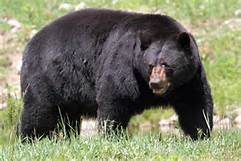
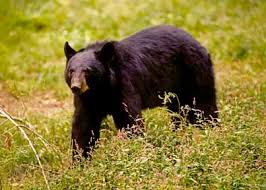 “The BLACK BEAR or URSUS AMERICANUS was selected as the official State Animal of West Virginia by a poll of students, teachers and sportsmen conducted by the Department of Natural Resources in 1954-55 and officially adopted by the Legislature, Regular Session, 1973, by House Concurrent Resolution No. 6. It is the only species of bear found in the State. While commonly referred to as the “black bear” its coloring is actually deeply tinted with brown. Its habitat in the State is primarily in the eastern mountain region. A litter usually consists of one or two cubs, rarely three, each weighing about eight ounces at birth. The adult reaches an average maximum weight of 250 pounds.” — (WV Blue Book)
“The BLACK BEAR or URSUS AMERICANUS was selected as the official State Animal of West Virginia by a poll of students, teachers and sportsmen conducted by the Department of Natural Resources in 1954-55 and officially adopted by the Legislature, Regular Session, 1973, by House Concurrent Resolution No. 6. It is the only species of bear found in the State. While commonly referred to as the “black bear” its coloring is actually deeply tinted with brown. Its habitat in the State is primarily in the eastern mountain region. A litter usually consists of one or two cubs, rarely three, each weighing about eight ounces at birth. The adult reaches an average maximum weight of 250 pounds.” — (WV Blue Book)
![]() “Perhaps no other animal has so excited the human imagination as the bear. References to bears are found in literature, folk songs, legends, mythology, fairy tales, and cartoons. The American black bear inhabits wooded and mountainous areas throughout most of North America, from Alaska to Florida, Canada to Mexico . . .”
“Perhaps no other animal has so excited the human imagination as the bear. References to bears are found in literature, folk songs, legends, mythology, fairy tales, and cartoons. The American black bear inhabits wooded and mountainous areas throughout most of North America, from Alaska to Florida, Canada to Mexico . . .”
Explore Richwooders’ “American black bear, (Ursus americanus)” Website to continue reading
June 15, 2013
![]() “In 1955, when the Department of Natural Resources completed a poll of West Virginia students, teachers and sportsmen regarding their choice for an official state animal, the black bear emerged as the paws-down winner. At that time, only about 500 of the native-born bruins could be found in West Virginia. . .”
“In 1955, when the Department of Natural Resources completed a poll of West Virginia students, teachers and sportsmen regarding their choice for an official state animal, the black bear emerged as the paws-down winner. At that time, only about 500 of the native-born bruins could be found in West Virginia. . .”
Official West Virginia State Symbols
BROOK TROUT
The Official West Virginia State Fish
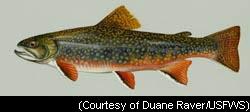
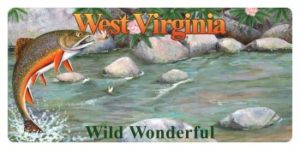 “The BROOK TROUT, or SALVELINUS FONTINALIS, was designated the state fish by House Concurrent Resolution No. 6, adopted during the Regular Session, 1973, following a poll of sportsmen who favored the brook trout. The brook trout is a native West Virginia species and puts up an excellent fight for its size, making it the most sought after trout by anglers. It thrives in small, cold, spring-fed streams and is unable to withstand warmer temperatures. The brook trout is olive with lighter sides and a reddish belly (in males) and is easily identified by the light-colored edges of the lower fins. Its hatchery growth averages six to eight inches in length soon after birth.” — (WV Blue Book)
“The BROOK TROUT, or SALVELINUS FONTINALIS, was designated the state fish by House Concurrent Resolution No. 6, adopted during the Regular Session, 1973, following a poll of sportsmen who favored the brook trout. The brook trout is a native West Virginia species and puts up an excellent fight for its size, making it the most sought after trout by anglers. It thrives in small, cold, spring-fed streams and is unable to withstand warmer temperatures. The brook trout is olive with lighter sides and a reddish belly (in males) and is easily identified by the light-colored edges of the lower fins. Its hatchery growth averages six to eight inches in length soon after birth.” — (WV Blue Book)
![]() “West Virginia’s official state fish, the brook trout, features prominently on one of two new wildlife-themed license plates recently made available to motorists. The license’s image is from a painting by the late Tom Allen, a wildlife biologist for the DNR.”
“West Virginia’s official state fish, the brook trout, features prominently on one of two new wildlife-themed license plates recently made available to motorists. The license’s image is from a painting by the late Tom Allen, a wildlife biologist for the DNR.”
Explore WV DNR’S “Brook Trout” Website
Official West Virginia State Symbols
GOLDEN DELICIOUS APPLE
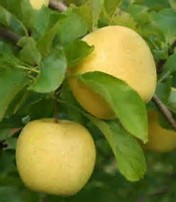 The Official West Virginia State Fruit
The Official West Virginia State Fruit
“The GOLDEN DELICIOUS APPLE was designated as the official State Fruit by Senate Concurrent Resolution No. 7, adopted by the Legislature on February 20, 1995. This apple variety was discovered by Anderson Mullins in Clay County, West Virginia, in 1905. The plain apple had been previously designated as the official State Fruit by House Concurrent Resolution No. 56, adopted March 7, 1972.” — (WV Blue Book)
“Clay County Golden Delicious Apple Festival”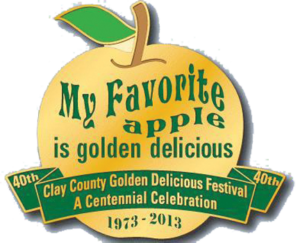
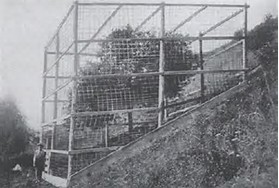 “It all started with discovering the first golden delicious tree down by Porter Creek by Anderson Mullins over 100 years ago in 1912. The Stark Bros. Nursery completed the sale of this tree and began growing the now West Virginia State Fruit for almost 50 years. The Golden Delicious has become so popular among so many parts of the world that in 1972 we started the first Clay County Golden Delicious Festival, where the whole county came together for a great weekend of fun, excitement, and of course, delicious apples!”
“It all started with discovering the first golden delicious tree down by Porter Creek by Anderson Mullins over 100 years ago in 1912. The Stark Bros. Nursery completed the sale of this tree and began growing the now West Virginia State Fruit for almost 50 years. The Golden Delicious has become so popular among so many parts of the world that in 1972 we started the first Clay County Golden Delicious Festival, where the whole county came together for a great weekend of fun, excitement, and of course, delicious apples!”
(One Hundred Years of Golden Delicious Apples and the 40th Annual Clay County Golden Delicious Festival were celebrated in 2013)
Explore “Clay County Golden Delicious Festival” Website
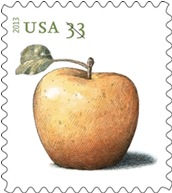
 ” ‘Eureka! I found it!’ Those were the words of Paul Stark of Stark Brothers Nursery when he bit into a new and exciting apple in 1914. He found that special apple on a thousand-mile treasure hunt which started…”
” ‘Eureka! I found it!’ Those were the words of Paul Stark of Stark Brothers Nursery when he bit into a new and exciting apple in 1914. He found that special apple on a thousand-mile treasure hunt which started…”
Explore Goldenseal’s “Striking Gold in the Clay County Hills” article to continue reading (pdf)
“State ____: Mountain State Has Many More Official Symbols”
![]() Additional information about State Flag, Bird, Tree, Fruit, Butterfly, Rock, Soil, Firearm, Colors, and Tartan.
Additional information about State Flag, Bird, Tree, Fruit, Butterfly, Rock, Soil, Firearm, Colors, and Tartan.
Official West Virginia State Symbols
MONARCH BUTTERFLY
The Official West Virginia State Butterfly

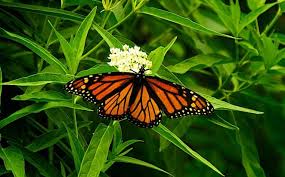 “The MONARCH BUTTERFLY, or DANAUS PLEXIPPUS, was declared the official butterfly of West Virginia by Senate Concurrent Resolution No. 11, adopted by the Legislature on March 1, 1995. The orange and black insect dines on milkweed as a caterpillar, sips nectar from flowers as a butterfly and, at summer’s end, migrates south to Mexico. The butterflies you see in the spring are the great grandchildren of the ones that lived in Mexico during the winter.” — (WV Blue Book)
“The MONARCH BUTTERFLY, or DANAUS PLEXIPPUS, was declared the official butterfly of West Virginia by Senate Concurrent Resolution No. 11, adopted by the Legislature on March 1, 1995. The orange and black insect dines on milkweed as a caterpillar, sips nectar from flowers as a butterfly and, at summer’s end, migrates south to Mexico. The butterflies you see in the spring are the great grandchildren of the ones that lived in Mexico during the winter.” — (WV Blue Book)
“State ____: Mountain State Has Many More Official Symbols”
![]() Additional information about State Flag, Bird, Tree, Fruit, Butterfly, Rock, Soil, Firearm, Colors, and Tartan.
Additional information about State Flag, Bird, Tree, Fruit, Butterfly, Rock, Soil, Firearm, Colors, and Tartan.
“Migration of the Monarch”

 “It is one of the most impressive displays of migratorial instinct and ability in the animal kingdom: Each year millions of monarch butterflies migrate from eastern Canada and the United States to Mexico — a journey of more than two thousand miles for some. This video segment from NOVA: The Mystery of Animal Pathfinders explores why monarchs make such an epic journey and how they manage to do it.” (4:38/1986/NOVA)
“It is one of the most impressive displays of migratorial instinct and ability in the animal kingdom: Each year millions of monarch butterflies migrate from eastern Canada and the United States to Mexico — a journey of more than two thousand miles for some. This video segment from NOVA: The Mystery of Animal Pathfinders explores why monarchs make such an epic journey and how they manage to do it.” (4:38/1986/NOVA)
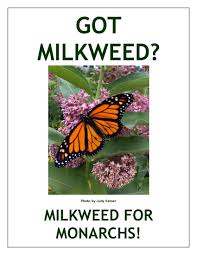
“The Monarch Butterfly in North America” – US Forest Service
 “The monarch butterfly (Danaus plexippus) is among the most recognized, studied, and loved of all of North America’s insects. Children study monarchs in school. Researchers and citizen scientists track their migration and breeding. Conservationists and government agencies are concerned about threats to breeding, migration, and wintering habitats.”
“The monarch butterfly (Danaus plexippus) is among the most recognized, studied, and loved of all of North America’s insects. Children study monarchs in school. Researchers and citizen scientists track their migration and breeding. Conservationists and government agencies are concerned about threats to breeding, migration, and wintering habitats.”
Explore USFS’ “Monarch” Website
“Monarch Butterflies are in Trouble. What Can You Do?” – US Fish & Wildlife Service
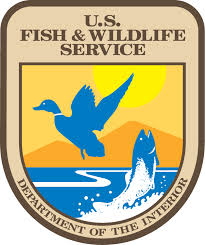 “Monarch butterflies are struggling. Counts of the familiar orange-and-black insects, admired for their flights of up to 5,000 miles a year, are trending down so sharply that their migration is now under threat. That means fewer monarchs to pollinate crops, spread seeds and feed birds.
“Monarch butterflies are struggling. Counts of the familiar orange-and-black insects, admired for their flights of up to 5,000 miles a year, are trending down so sharply that their migration is now under threat. That means fewer monarchs to pollinate crops, spread seeds and feed birds.
“What Can You Do? Plant Milkweed!”
“Why milkweed? Milkweed is the host plant for monarchs—the lone plant on which the butterflies lay their eggs in spring and the only food source for monarch larvae. One reason monarchs are failing is that milkweed is disappearing from the American landscape. Scientists blame land-use practices such as farming with crops genetically modified to resist herbicides. The herbicides kill plants such as milkweed that grow around farm fields and have no such protection. Urban sprawl and development have also chewed up monarch habitat.”
View USFWS’ Press Release — includes instructions for collecting and processing milkweed pods and seeds — (as found on Archive.org’s “Wayback Machine”) — links to other websites may not work or be slow to load
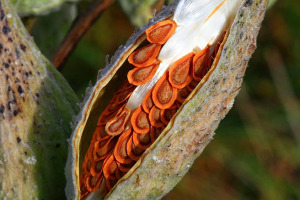 Photo: “A milkweed pod opens in fall at Canaan Valley National Wildlife Refuge in West Virginia to reveal its silk and seeds. Collecting and planting the seeds can help monarch butterflies. Credit: Marvin DeJong”
Photo: “A milkweed pod opens in fall at Canaan Valley National Wildlife Refuge in West Virginia to reveal its silk and seeds. Collecting and planting the seeds can help monarch butterflies. Credit: Marvin DeJong”
“Collecting and Harvesting Common Milkweed, Asclepias syriaca, Seeds”
“I recommend doing this outside, there is still a bit of fluff escaping. Most milkweed seed pods are just like this. The seed pods can be collected before they open and the seeds taken out easily without having all the fluff flying every where. Make sure to leave some seeds in the field where you are collecting. Full sun. Dig up soil, sprinkle seeds, cover with ½ inch of soil. Fresh seeds can be planted in the fall. If they are not planted in the fall, keep in a cold area like a garage and plant them in the spring when the weather warms up.” (3:01/2013/Mona Miller)
![]()
“Butterflies, Blooms, Bees, & Birds – The Four B’s of Milkweed.”
“Growing Milkweed plants has many benefits. You will have satisfaction in helping build a sanctuary for butterflies and other pollinators. You will also get seasonal visual beauty from their blossoms.”
Explore Grow Milkweed Plants.com’s “West Virginia Native Milkweed” Website – includes “West Virginia Native Milkweed Species” and “Milkweed Retail Nurseries in West Virginia” – very limited sponsor advertisements — Nurseries in West Virginia are 1) Sunshine Farm & Gardens at Renick and 2) Enchanter’s Garden Native Plant Nursery at Hinton
“Monarch Watch”
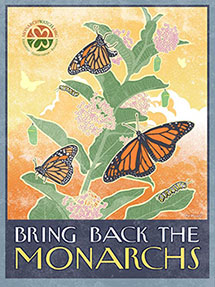


Explore “Monarch Watch” Website
“Butterfly Gardening” – West Virginia Division of Natural Resources
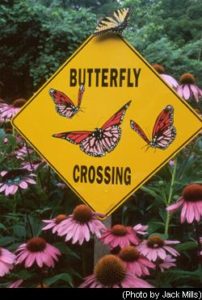
 “Butterflies can be a welcome addition to your home and surroundings. Not only do their bright colors add excitement to our lives, but they are also effective crop and flower pollinators, play an important role in the food chain, and are sensitive indicators of environmental quality. A variety of wildflowers & flowering shrubs are all it really takes to produce a butterfly garden. However, to attract the greatest number and variety of these beautiful creatures, plants that serve all the life stages of butterflies must be provided.”
“Butterflies can be a welcome addition to your home and surroundings. Not only do their bright colors add excitement to our lives, but they are also effective crop and flower pollinators, play an important role in the food chain, and are sensitive indicators of environmental quality. A variety of wildflowers & flowering shrubs are all it really takes to produce a butterfly garden. However, to attract the greatest number and variety of these beautiful creatures, plants that serve all the life stages of butterflies must be provided.”
Explore information from WV DNR’s “Butterfly Gardening” Website (pdf)
Explore WV DNR’s “Butterfly Gardening in West Virginia” brochure (pdf) (2006)
Explore WV DNR’s “What you can do to help West Virginia’s official butterfly” Website
Explore WV DNR’s “Stressed out? Start a pollinator garden” Website
Official West Virginia State Symbols
MONONGAHELA SILT LOAM
The Official West Virginia State Soil
 “The official state soil was declared to be MONONGAHELA SILT LOAM by Senate Concurrent Resolution No. 5, adopted by the Legislature on April 2, 1997. Monongahela silt loam covers over 100,000 acres in 42 counties throughout West Virginia and is used extensively for crops, hay, pasture, woodland, housing and prime farmland.” — (WV Blue Book)
“The official state soil was declared to be MONONGAHELA SILT LOAM by Senate Concurrent Resolution No. 5, adopted by the Legislature on April 2, 1997. Monongahela silt loam covers over 100,000 acres in 42 counties throughout West Virginia and is used extensively for crops, hay, pasture, woodland, housing and prime farmland.” — (WV Blue Book)
 “Monongahela soils occur on more than 100,000 acres in 45 counties in West Virginia. These very deep, moderately well drained soils are on alluvial stream terraces that are not flooded. They are used extensively for cultivated crops, hay, pasture, woodland, and homesite development. Monongahela soils are considered prime farmland where slopes are 3 percent or less. The soils are well suited to crop production.
“Monongahela soils occur on more than 100,000 acres in 45 counties in West Virginia. These very deep, moderately well drained soils are on alluvial stream terraces that are not flooded. They are used extensively for cultivated crops, hay, pasture, woodland, and homesite development. Monongahela soils are considered prime farmland where slopes are 3 percent or less. The soils are well suited to crop production.
“The Monongahela series was designated the official state soil by the West Virginia Legislature in April 1997. The name ‘Monongahela’ is derived from a Native American word meaning ‘high banks or bluffs, breaking off and falling down in places.’ ”
“State ____: Mountain State Has Many More Official Symbols”
![]() Additional information about State Flag, Bird, Tree, Fruit, Butterfly, Rock, Soil, Firearm, Colors, and Tartan.
Additional information about State Flag, Bird, Tree, Fruit, Butterfly, Rock, Soil, Firearm, Colors, and Tartan.
Official West Virginia State Symbols
HONEY BEE
The Official West Virginia State Insect
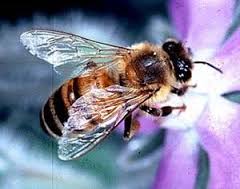
 “The HONEY BEE, or APIS MELLIFERA, was declared the official insect of West Virginia by Senate Concurrent Resolution No. 9, adopted by the Legislature on March 7, 2002. In addition to its flavorful honey, the honey bee pollinates many of the state’s most important crops, including fruits, vegetables and grasses. Its activity produces more benefit to the state’s economy than any other insect. The honey bee has six legs, four wings and its coloring ranges from dark yellow to gold with three dark bands on its abdomen.” — (WV Blue Book)
“The HONEY BEE, or APIS MELLIFERA, was declared the official insect of West Virginia by Senate Concurrent Resolution No. 9, adopted by the Legislature on March 7, 2002. In addition to its flavorful honey, the honey bee pollinates many of the state’s most important crops, including fruits, vegetables and grasses. Its activity produces more benefit to the state’s economy than any other insect. The honey bee has six legs, four wings and its coloring ranges from dark yellow to gold with three dark bands on its abdomen.” — (WV Blue Book)
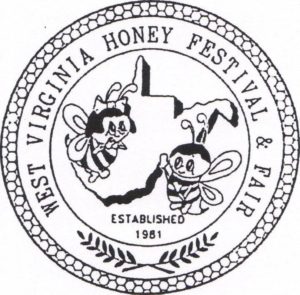 “Agriculture depends greatly on the honeybee for pollination. Honeybees account for 80% of all insect pollination. Without such pollination, we would see a significant decrease in the yield of fruits and vegetables.”
“Agriculture depends greatly on the honeybee for pollination. Honeybees account for 80% of all insect pollination. Without such pollination, we would see a significant decrease in the yield of fruits and vegetables.”
 “Bees are cooperative, intuitive, hard-working, living beings whose labor is exploited for its fruits (superfood honey). . . Humans have helped, in some way or another, to create, enable, and excel bee population destruction. . . Humans can help bees in two direct ways: planting bee-friendly flowers and not polluting them with chemical toxins like pesticides. . .”
“Bees are cooperative, intuitive, hard-working, living beings whose labor is exploited for its fruits (superfood honey). . . Humans have helped, in some way or another, to create, enable, and excel bee population destruction. . . Humans can help bees in two direct ways: planting bee-friendly flowers and not polluting them with chemical toxins like pesticides. . .”
 “Forty-five years ago, when Paul Cappas got his first hive, all the farmers had bees. Honeybees could live freely at the edge of the land, mostly undisturbed until farmers opened up the hive to harvest their honey or to check up on their progress. It was a good tradeoff: The bees pollinated the farmers’ crops, and the farmers gave the bees a home rich in pollen and nutrients they could use to make food and survive the winters. Any extra honey at the end of the year was just a sweet, golden bonus. . .”
“Forty-five years ago, when Paul Cappas got his first hive, all the farmers had bees. Honeybees could live freely at the edge of the land, mostly undisturbed until farmers opened up the hive to harvest their honey or to check up on their progress. It was a good tradeoff: The bees pollinated the farmers’ crops, and the farmers gave the bees a home rich in pollen and nutrients they could use to make food and survive the winters. Any extra honey at the end of the year was just a sweet, golden bonus. . .”
Official West Virginia State Symbols
WEST VIRGINIA FOSSIL CORAL – CHALCEDONY
The Official West Virginia State Gem
“
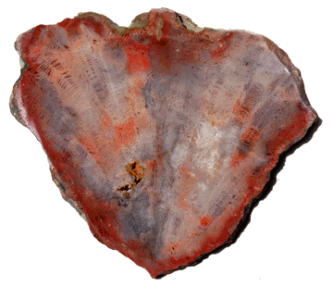 The WEST VIRGINIA FOSSIL CORAL (the mineral CHALCEDONY) was designated the official state gem by House Concurrent Resolution No. 39, adopted by the Legislature on March 10, 1990. Though not technically a Gemstone, but rather the silicified Mississippian Fossil Coral Lithostrotionella, chalcedony is found in Hillsdale Limestone in portions of Greenbrier and Pocahontas counties and is often cut and polished for jewelry display. Lithostrotionella coral lived in the warm, shallow waters covering much of North America during the Mississippian Period (~ 350–325 million years ago).” — (WV Blue Book)
The WEST VIRGINIA FOSSIL CORAL (the mineral CHALCEDONY) was designated the official state gem by House Concurrent Resolution No. 39, adopted by the Legislature on March 10, 1990. Though not technically a Gemstone, but rather the silicified Mississippian Fossil Coral Lithostrotionella, chalcedony is found in Hillsdale Limestone in portions of Greenbrier and Pocahontas counties and is often cut and polished for jewelry display. Lithostrotionella coral lived in the warm, shallow waters covering much of North America during the Mississippian Period (~ 350–325 million years ago).” — (WV Blue Book)
June 15, 2013
(This story is reprinted from the April 27, 1990, edition of The Charleston Gazette.)
 State Gem: Fossil Coral Comes from Land’s Oceanic Past – About 330 million years ago, as the ocean began to recede from the eastern portion of the land mass that makes up present-day West Virginia, limestone began to form around sections of coral reefs, protecting them from exposure to the elements during the millennia to follow. . .
State Gem: Fossil Coral Comes from Land’s Oceanic Past – About 330 million years ago, as the ocean began to recede from the eastern portion of the land mass that makes up present-day West Virginia, limestone began to form around sections of coral reefs, protecting them from exposure to the elements during the millennia to follow. . .
“Gator Girl Rocks — America’s Best Rockhounding Resource”
“ This coral, and many other varieties, lived about 340 million years ago, during the Mississippian Period, at a time when the state was encroached on by a shallow sea. In addition to corals, this sea hosted a teeming fauna of brachiopods, trilobites, and fish. The two main types of Paleozoic corals were tabulate and rugose corals.
This coral, and many other varieties, lived about 340 million years ago, during the Mississippian Period, at a time when the state was encroached on by a shallow sea. In addition to corals, this sea hosted a teeming fauna of brachiopods, trilobites, and fish. The two main types of Paleozoic corals were tabulate and rugose corals.
Lithostrotionella is a tabulate coral. Both types were decimated in the great extinction at the end of the Permian Period, 245 million years ago, which wiped out over 90% of the species of life on earth. They were subsequently replaced by the scleractinian corals that form our reefs today. Lithostrotionella is preserved as the siliceous mineral chalcedony, a variety of microcrystalline quartz. It is found in the Hillsdale Limestone in portions of Greenbrier and Pocahontas counties in the southeastern portion of the state.”
Official West Virginia State Symbols
SHAY # 5
The Official West Virginia State Locomotive
“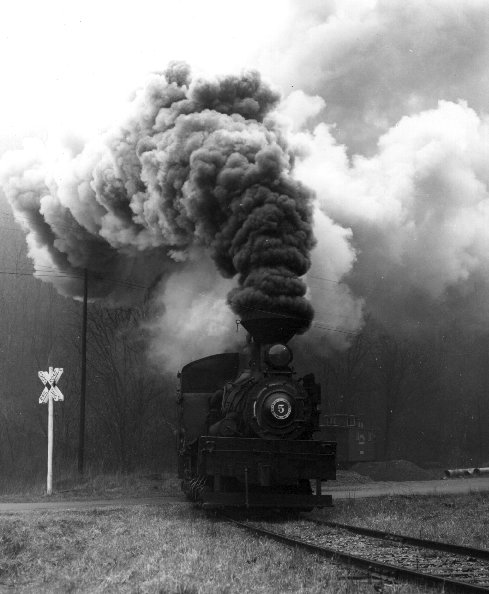
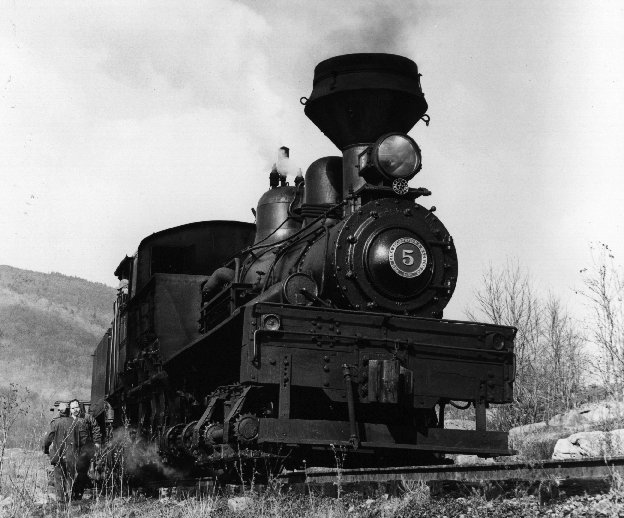 The Cass Scenic Railroad’s SHAY No. 5 steam locomotive was designated the official state locomotive of West Virginia by Senate Concurrent Resolution No. 34, adopted by the Legislature on March 11, 2004. The legendary Shay No. 5 was built for the Greenbrier and Elk River Railroad by the Lima Locomotive Works of Lima, Ohio. This turn-of-the-century class C-80 Shay has been toiling up Cheat Mountain for nearly 100 years, making it one of the oldest engines in continuous service on its original line, and the second oldest Shay in existence. Named as a tribute to the history of timbering in West Virginia, the Shay No. 5 is an important historical artifact and a wonderfully preserved example of the technology of the early 20th century.” — (WV Blue Book)
The Cass Scenic Railroad’s SHAY No. 5 steam locomotive was designated the official state locomotive of West Virginia by Senate Concurrent Resolution No. 34, adopted by the Legislature on March 11, 2004. The legendary Shay No. 5 was built for the Greenbrier and Elk River Railroad by the Lima Locomotive Works of Lima, Ohio. This turn-of-the-century class C-80 Shay has been toiling up Cheat Mountain for nearly 100 years, making it one of the oldest engines in continuous service on its original line, and the second oldest Shay in existence. Named as a tribute to the history of timbering in West Virginia, the Shay No. 5 is an important historical artifact and a wonderfully preserved example of the technology of the early 20th century.” — (WV Blue Book)
“ Shay No. 5 — (Mower No. 5) – C/N 1503, 1905; Class 80-3. Built for the original Cass-based railroad, West Virginia Spruce Lumber Co.’s Greenbrier & Elk River R.R. Shay 5 is the oldest and longest-operating Shay at Cass. Originally assigned to the Cass Hill as road engine; various assignments while based at Spruce and on Elk River – until about 1939 the locomotive came to Cass only for heavy repairs. . .”
Shay No. 5 — (Mower No. 5) – C/N 1503, 1905; Class 80-3. Built for the original Cass-based railroad, West Virginia Spruce Lumber Co.’s Greenbrier & Elk River R.R. Shay 5 is the oldest and longest-operating Shay at Cass. Originally assigned to the Cass Hill as road engine; various assignments while based at Spruce and on Elk River – until about 1939 the locomotive came to Cass only for heavy repairs. . .”
Explore MSR&LHA’s “Shay #5” Website to continue reading
“Preserving West Virginia Lumbering and Railroad History”
“ The Mountain State Railroad & Logging Historical Association was founded in 1982 and is a 501(c)(3) non-profit, all volunteer, organization. The Association is dedicated to the research, collection, preservation, and publication of information about West Virginia’s historic lumbering and railroad operations. It also supports the restoration of associated equipment and structures whenever possible.
The Mountain State Railroad & Logging Historical Association was founded in 1982 and is a 501(c)(3) non-profit, all volunteer, organization. The Association is dedicated to the research, collection, preservation, and publication of information about West Virginia’s historic lumbering and railroad operations. It also supports the restoration of associated equipment and structures whenever possible.
“The Association is based in Cass, West Virginia, and has over 500 members located throughout the U.S. and in several foreign countries. MSR&LHA is the Foundation of Record for the Cass Scenic Railroad State Park and much of its focus is on the Park’s railroad and historic structures.”
Explore Mountain State Railroad & Logging Historical Association’s Website
““

 “With a resounding whistle that you can feel to your core, the Durbin Rocket takes off from the train depot and begins its journey into the mountains of Pocahontas County, West Virginia. Eager tourists lean out from the open-air coaches of this 1920s-era train as it winds along the Greenbrier River. It is one of those hot summer days where you can almost hear the hum of sunshine in the air, but the heat doesn’t keep the train enthusiasts away. . .”
“With a resounding whistle that you can feel to your core, the Durbin Rocket takes off from the train depot and begins its journey into the mountains of Pocahontas County, West Virginia. Eager tourists lean out from the open-air coaches of this 1920s-era train as it winds along the Greenbrier River. It is one of those hot summer days where you can almost hear the hum of sunshine in the air, but the heat doesn’t keep the train enthusiasts away. . .”
Explore “” on West Virginia Public Broadcasting’s Website to continue reading
Official West Virginia State Symbols
TIMBER RATTLESNAKE
The Official West Virginia State Reptile
“ The TIMBER RATTLESNAKE, or CROTALUS HORRIDUS, was designated the official state reptile by Senate Concurrent Resolution No. 29, adopted by the Legislature March 8, 2008. This venomous reptile is the only species of snake in the state with a segmented rattle at the end of its tail. It has brown or black chevron-shaped markings down its back – a pattern the resolution denotes as “reminiscent of West Virginia’s fauna and flora.” Usually a docile snake, rattlers usually occur in remote, rocky, mountainous sections of West Virginia.” – (WV Blue Book)
The TIMBER RATTLESNAKE, or CROTALUS HORRIDUS, was designated the official state reptile by Senate Concurrent Resolution No. 29, adopted by the Legislature March 8, 2008. This venomous reptile is the only species of snake in the state with a segmented rattle at the end of its tail. It has brown or black chevron-shaped markings down its back – a pattern the resolution denotes as “reminiscent of West Virginia’s fauna and flora.” Usually a docile snake, rattlers usually occur in remote, rocky, mountainous sections of West Virginia.” – (WV Blue Book)
WILDLIFE DIVERSITY NOTEBOOK: Timber Rattlesnakes By Jennifer Adams and David Garst

 “The timber rattlesnake ( Crotalus horridus ) is possibly the most misunderstood snake species encountered in West Virginia. Timber rattlesnakes are actually quite secretive and passive animals—far from the aggressive creatures perceived by most people. They fulfill their role in maintaining an ecological balance that promotes . . .”
“The timber rattlesnake ( Crotalus horridus ) is possibly the most misunderstood snake species encountered in West Virginia. Timber rattlesnakes are actually quite secretive and passive animals—far from the aggressive creatures perceived by most people. They fulfill their role in maintaining an ecological balance that promotes . . .”
Explore Information from WV DNR Wildlife Magazine’s “Timber Rattlesnake” Website to continue reading
Official West Virginia State Symbols
MEGALONYX JEFFERSONII
The Official West Virginia State Fossil
“T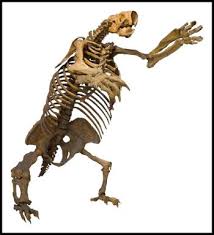
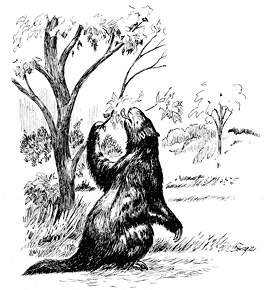 he JEFFERSON’S GROUND SLOTH, or MEGALONYX JEFFERSONII, was designated the official state fossil by Senate Concurrent Resolution No. 29, adopted by the Legislature March 8, 2008. President Thomas Jefferson obtained and described fossil bones from a limestone cave in what is now Monroe County in 1797. These bones were again described in 1799 by Casper Wistar as the bones of a giant extinct ground sloth and were named in honor of President Jefferson in order to better promote the earth sciences and the history of our region. The bones are from the Ice Age, or Pleistocene Epoch, which lasted from 10,000 to 1.8 million years ago, and afford an opportunity for special studies in American, state and natural history for the students of the state.” — (WV Blue Book)
he JEFFERSON’S GROUND SLOTH, or MEGALONYX JEFFERSONII, was designated the official state fossil by Senate Concurrent Resolution No. 29, adopted by the Legislature March 8, 2008. President Thomas Jefferson obtained and described fossil bones from a limestone cave in what is now Monroe County in 1797. These bones were again described in 1799 by Casper Wistar as the bones of a giant extinct ground sloth and were named in honor of President Jefferson in order to better promote the earth sciences and the history of our region. The bones are from the Ice Age, or Pleistocene Epoch, which lasted from 10,000 to 1.8 million years ago, and afford an opportunity for special studies in American, state and natural history for the students of the state.” — (WV Blue Book)
“Gator Girl Rocks — America’s Best Rockhounding Resource”
“
 Megalonyx jeffersonii is the Pleistocene age extinct Jefferson ground sloth. . . In the 1790s, workers mining for saltpeter in a Monroe County cave found several large bones. A Virginia man named John Stewart sent the bones to Thomas Jefferson, who presented them at a meeting of the American Philosophical Society in Philadelphia in 1797. Jefferson believed that the bones were the remains of a prehistoric lion and called the creature Megalonyx, meaning ‘great claw.’
Megalonyx jeffersonii is the Pleistocene age extinct Jefferson ground sloth. . . In the 1790s, workers mining for saltpeter in a Monroe County cave found several large bones. A Virginia man named John Stewart sent the bones to Thomas Jefferson, who presented them at a meeting of the American Philosophical Society in Philadelphia in 1797. Jefferson believed that the bones were the remains of a prehistoric lion and called the creature Megalonyx, meaning ‘great claw.’
“In 1799, a physician named Caspar Wistar published a paper that described the fossil and credited Jefferson with its discovery. The original Megalonyx fossil is housed in the Academy of Natural Sciences in Philadelphia. Other Megalonyx fossils have been found in two Monroe County caves and caves in Pendleton County and Greenbrier County. Such fossils have also been found in others parts of the United States.”
Explore Gator Girl Rocks’ “Rockhounding West Virginia” Website – includes State Stone [Rock], State Gemstone, State Fossil and West Virginia Rockhounding Resources
“Explore the Ice Age Midwest …..plants and animals of the Pleistocene”
“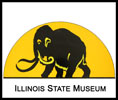 Jefferson’s ground sloth, Megalonyx Jeffersonii, is a Megalonychid ground sloth and one of two types of ground sloth that have been recovered from Ice Age sites in the Midwest. Ground sloths were large relatives of the modern two-toed sloths (Choloepus spp.) and three-toed sloths (Bradypus spp.). However, unlike modern sloths, which spend most of their time in trees, the ground sloths spent all of their time on the ground. . .”
Jefferson’s ground sloth, Megalonyx Jeffersonii, is a Megalonychid ground sloth and one of two types of ground sloth that have been recovered from Ice Age sites in the Midwest. Ground sloths were large relatives of the modern two-toed sloths (Choloepus spp.) and three-toed sloths (Bradypus spp.). However, unlike modern sloths, which spend most of their time in trees, the ground sloths spent all of their time on the ground. . .”
Explore Ice Age Museum’s “Jefferson’s Ground Sloth” Website to continue reading
Ground Sloth (Megalonyx) (2:12/2016/Matthew Thiele and John Stanislav)
Official West Virginia State Symbols
BECKLEY EXHIBITION COAL MINE
The Official West Virginia State Exhibition Coal Mine
“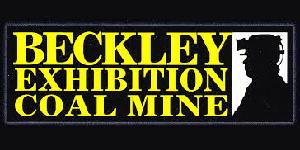 The CITY OF BECKLEY’S EXHIBITION COAL MINE was designated as the official exhibition coal mine of West Virginia by Committee Substitute for House Concurrent Resolution No. 68, adopted by the Legislature on March 2, 2012. Part of the New River Park, the Beckley Exhibition Coal mine opened to visitors in 1962. Since then, the mine allows more than 45,000 visitors a year to experience the history of low-seam coal mining from the hand-loading days into the era of modern mechanization while riding authentic “man cars” through 1,500 feet of underground passages under the supervision of an experienced veteran coal miner. The mine offers recreational and educational opportunities for visitors through its Youth Museum of Southern West Virginia, hosting a planetarium and seasonal exhibitions, all while providing an invaluable connection to the state’s rich coal history.” — (WV Blue Book)
The CITY OF BECKLEY’S EXHIBITION COAL MINE was designated as the official exhibition coal mine of West Virginia by Committee Substitute for House Concurrent Resolution No. 68, adopted by the Legislature on March 2, 2012. Part of the New River Park, the Beckley Exhibition Coal mine opened to visitors in 1962. Since then, the mine allows more than 45,000 visitors a year to experience the history of low-seam coal mining from the hand-loading days into the era of modern mechanization while riding authentic “man cars” through 1,500 feet of underground passages under the supervision of an experienced veteran coal miner. The mine offers recreational and educational opportunities for visitors through its Youth Museum of Southern West Virginia, hosting a planetarium and seasonal exhibitions, all while providing an invaluable connection to the state’s rich coal history.” — (WV Blue Book)
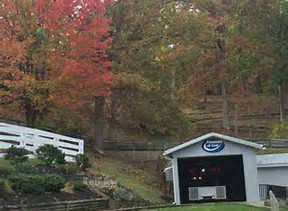 “At the Exhibition Coal Mine, one can ride through the dark passages of a vintage coal mine. The guides are veteran miners and provide firsthand accounts of the daily responsibilities and travail of past and present-day miners.”
“At the Exhibition Coal Mine, one can ride through the dark passages of a vintage coal mine. The guides are veteran miners and provide firsthand accounts of the daily responsibilities and travail of past and present-day miners.”
Explore “Beckley Exhibition Coal Mine” Website
Official West Virginia State Symbols
BITUMINOUS COAL
The Official West Virginia State Rock
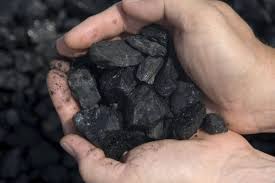 “BITUMINOUS COAL was designated the official state rock by House
“BITUMINOUS COAL was designated the official state rock by House
Concurrent Resolution No. 37, adopted by the Legislature on April 11,
2009. Coal was first discovered in West Virginia in 1742. The coal industry
was an integral part of the economic and social fabric of the state for many
years. Coal was used in other industries throughout the state including
manufacturing, steel, and chemical industries. Bituminous Coal is found
naturally in the majority of the 55 counties.” — (WV Blue Book)
 “In 1742, English explorer John Peter Salley navigated along the Coal River near what is now Peytona in Boone County and wrote about a “great plenty of coals.” Salley was the first European to write about the mineral that would define the region’s future. Thomas Jefferson later wrote about western Virginia coal in his Notes on the State of Virginia.
“In 1742, English explorer John Peter Salley navigated along the Coal River near what is now Peytona in Boone County and wrote about a “great plenty of coals.” Salley was the first European to write about the mineral that would define the region’s future. Thomas Jefferson later wrote about western Virginia coal in his Notes on the State of Virginia.
“The West Virginia coal industry dates to the western Virginia frontier of the early 1800s. The region’s first industry was salt, an essential mineral for preserving and shipping meat before refrigeration. Salt was produced by boiling brine, found abundantly along the banks of the Kanawha River. To boil the brine, salt manufacturers initially used wood to fire the furnaces; however, in 1817, when the timber supply dwindled, salt maker David Ruffner turned to coal. . .”
“State ____: Mountain State Has Many More Official Symbols”
![]() Additional information about State Flag, Bird, Tree, Fruit, Butterfly, Rock, Soil, Firearm, Colors, and Tartan.
Additional information about State Flag, Bird, Tree, Fruit, Butterfly, Rock, Soil, Firearm, Colors, and Tartan.
“Gator Girl Rocks — America’s Best Rockhounding Resource”
 “West Virginia designated bituminous coal as its official state stone in 2009, honoring the significance of coal in the state’s economy, history, and geology. Coal is found naturally deposited in the vast majority of the 55 counties of West Virginia. Coal was found in present-day Boone County in colonial times, in 1742, by the German explorer John Peter Salley. In 1770, George Washington noted “a coal hill on fire” near West Columbia in current Mason County. The first commercial coal mine was opened near Wheeling by Conrad Cotts in 1810, for blacksmithing and domestic use. The coal industry has evolved into and has been for many years an integral part of the economic and social fabric of the State.”
“West Virginia designated bituminous coal as its official state stone in 2009, honoring the significance of coal in the state’s economy, history, and geology. Coal is found naturally deposited in the vast majority of the 55 counties of West Virginia. Coal was found in present-day Boone County in colonial times, in 1742, by the German explorer John Peter Salley. In 1770, George Washington noted “a coal hill on fire” near West Columbia in current Mason County. The first commercial coal mine was opened near Wheeling by Conrad Cotts in 1810, for blacksmithing and domestic use. The coal industry has evolved into and has been for many years an integral part of the economic and social fabric of the State.”
Explore Gator Girl Rocks’ “Rockhounding West Virginia” Website – includes State Stone [Rock], State Gemstone, State Fossil and West Virginia Rockhounding Resources
<<More information on the mining, transportation, and use of coal is on the MH3WV Energy/Natural Resources page>>
June 15, 2013
 State rock: What else? Coal – Bituminous coal became West Virginia’s official state rock in 2009 when Gov. Joe Manchin signed a House of Delegates resolution. The designation was based primarily on coal’s contribution to the state’s economy and history. West Virginia is the nation’s No. 2 coal producer. The resolution notes that explorer John Peter Salley found coal near Racine in 1742 and named the Coal River as a result. George Washington observed a Mason County coal fire in 1770, and Conrad Cotts opened the state’s first commercial coal mine near Wheeling in 1810, according to the resolution. In 1950, 127,000 coal miners were employed in the industry. Coal production reached its peak in 1997 at 180 million tons of coal mined.
State rock: What else? Coal – Bituminous coal became West Virginia’s official state rock in 2009 when Gov. Joe Manchin signed a House of Delegates resolution. The designation was based primarily on coal’s contribution to the state’s economy and history. West Virginia is the nation’s No. 2 coal producer. The resolution notes that explorer John Peter Salley found coal near Racine in 1742 and named the Coal River as a result. George Washington observed a Mason County coal fire in 1770, and Conrad Cotts opened the state’s first commercial coal mine near Wheeling in 1810, according to the resolution. In 1950, 127,000 coal miners were employed in the industry. Coal production reached its peak in 1997 at 180 million tons of coal mined.
Official West Virginia State Symbols
WEST VIRGINIA SHAWL
The Official West Virginia State Tartan
“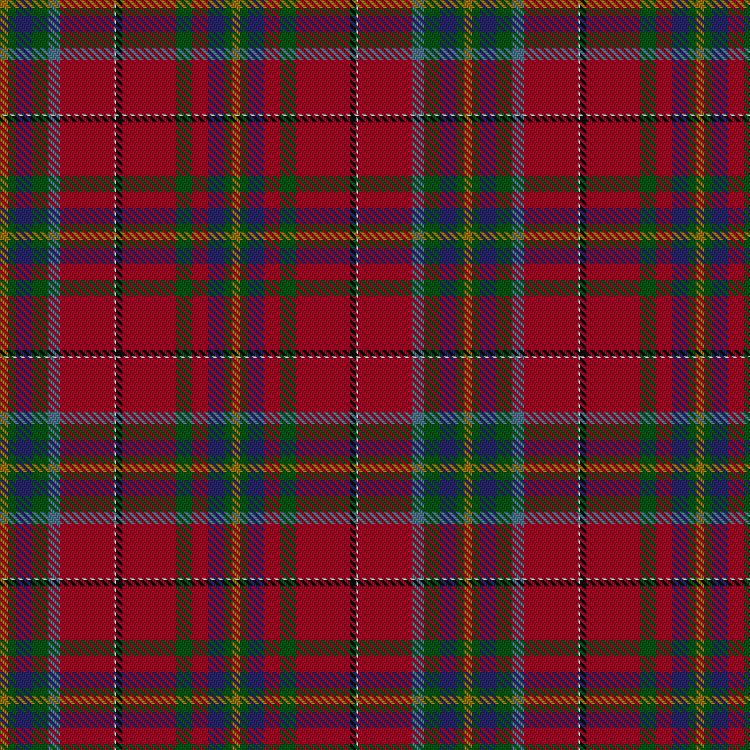 On March 6, 2008, the Legislature adopted House Concurrent Resolution 29, designating the WEST VIRGINIA SHAWL as the official state tartan. These woolen plaid cloths were originally worn to differentiate between Scottish clans and families. Many Americans can claim Celtic roots, and, as a result, more than 20 other states have adopted official state tartans. According to the resolution, a majority of West Virginia’s earliest settlers were of Celtic Descent. The pattern for the West Virginia Shawl is based on a previously undiscovered shawl found at the Daughters of the American Revolution Museum in Barboursville. The official state tartan is based on this design and contains the following colors, each one representing a different aspect of the state: scarlet for the state bird, the cardinal; yellow for the fall colors; blue for the rivers and lakes; black for the official state animal, the black bear, and the state’s oil and coal resources; green for the state flower, the rhododendron, and the state’s meadows; azure for the sky; and, white in order to include all the colors of the United States flag.” — (WV Blue Book)
On March 6, 2008, the Legislature adopted House Concurrent Resolution 29, designating the WEST VIRGINIA SHAWL as the official state tartan. These woolen plaid cloths were originally worn to differentiate between Scottish clans and families. Many Americans can claim Celtic roots, and, as a result, more than 20 other states have adopted official state tartans. According to the resolution, a majority of West Virginia’s earliest settlers were of Celtic Descent. The pattern for the West Virginia Shawl is based on a previously undiscovered shawl found at the Daughters of the American Revolution Museum in Barboursville. The official state tartan is based on this design and contains the following colors, each one representing a different aspect of the state: scarlet for the state bird, the cardinal; yellow for the fall colors; blue for the rivers and lakes; black for the official state animal, the black bear, and the state’s oil and coal resources; green for the state flower, the rhododendron, and the state’s meadows; azure for the sky; and, white in order to include all the colors of the United States flag.” — (WV Blue Book)
[Not to be confused with the “West Virginia Old Shawl.”]

Explore The Scottish Register of Tartans’ “Tartan Details – West Virginia” website — (Our official tartan)
Explore The Scottish Register of Tartans’ “Tartan Details – West Virginia Old Shawl” website — (NOT our official tartan)
June 15, 2013
 State tartan: West Virginia shawl – Reprinted from Today in the Legislature, a blog of the West Virginia Legislature, on March 13, 2008: On March 6, the Legislature adopted House Concurrent Resolution 29, designating an adaptation of the “West Virginia Shawl” as the official state tartan. Many Americans can claim Celtic roots, and, as a result, more than 20 other states have adopted official state tartans. According to the resolution, a majority of West Virginia’s earliest settlers were of Celtic descent. The pattern for the tartan is based on a previously undiscovered “West Virginia Shawl” found at the Daughters of the American Revolution Museum in Barboursville. The official state tartan is based on this design and contains the following colors, each one representing a different aspect of the state:
State tartan: West Virginia shawl – Reprinted from Today in the Legislature, a blog of the West Virginia Legislature, on March 13, 2008: On March 6, the Legislature adopted House Concurrent Resolution 29, designating an adaptation of the “West Virginia Shawl” as the official state tartan. Many Americans can claim Celtic roots, and, as a result, more than 20 other states have adopted official state tartans. According to the resolution, a majority of West Virginia’s earliest settlers were of Celtic descent. The pattern for the tartan is based on a previously undiscovered “West Virginia Shawl” found at the Daughters of the American Revolution Museum in Barboursville. The official state tartan is based on this design and contains the following colors, each one representing a different aspect of the state:
- Scarlet for the state bird, the cardinal
- Yellow for the fall colors
- Blue for the rivers and lakes
- Black for the official state animal, the black bear, and the state’s oil and coal resources
- Green for the state flower, the rhododendron, and the state’s meadows
- Azure for the sky
- White in order to include all the colors of the United States
“State ____: Mountain State Has Many More Official Symbols”
![]() Additional information about State Flag, Bird, Tree, Fruit, Butterfly, Rock, Soil, Firearm, Colors, and Tartan.
Additional information about State Flag, Bird, Tree, Fruit, Butterfly, Rock, Soil, Firearm, Colors, and Tartan.
Official West Virginia State Symbols
HALL FLINTLOCK MODEL 1819
The Official West Virginia State Firearm
“ T
T he HALL FLINTLOCK MODEL 1819 was designated the official state firearm by Senate Concurrent Resolution No. 7, adopted by the Legislature on April 4, 2013. It was originally manufactured in Harpers Ferry by John H. Hall, and was adopted into the United States Army in 1819, the first breech-loading rifle to be adopted by any nation’s military. Characterized by a block breech that has the ability to be lifted out so the operator can insert the powder and bullet, it created a faster and simpler way to handle a gun. It was also the first entirely machine-made weapon ever manufactured with interchangeable parts. The Flintlock Model continued to be used during the U.S. Civil War. This alone makes it significant to West Virginia because the state was created out of that armed conflict.” — (WV Blue Book)
he HALL FLINTLOCK MODEL 1819 was designated the official state firearm by Senate Concurrent Resolution No. 7, adopted by the Legislature on April 4, 2013. It was originally manufactured in Harpers Ferry by John H. Hall, and was adopted into the United States Army in 1819, the first breech-loading rifle to be adopted by any nation’s military. Characterized by a block breech that has the ability to be lifted out so the operator can insert the powder and bullet, it created a faster and simpler way to handle a gun. It was also the first entirely machine-made weapon ever manufactured with interchangeable parts. The Flintlock Model continued to be used during the U.S. Civil War. This alone makes it significant to West Virginia because the state was created out of that armed conflict.” — (WV Blue Book)
“O riginal Model 1819 Halls flintlock breechloading rifle, .54 caliber. First machine of any kind made with TOTALLY INTERCHANGEABLE PARTS, this was part of the beginning of what was called the “American Method of Manufacture”, where less skilled workers could operate machinery to build gun parts, then assemble the whole gun. People from all over the world came to Harpers Ferry to see this wonder of modern manufacture.”
riginal Model 1819 Halls flintlock breechloading rifle, .54 caliber. First machine of any kind made with TOTALLY INTERCHANGEABLE PARTS, this was part of the beginning of what was called the “American Method of Manufacture”, where less skilled workers could operate machinery to build gun parts, then assemble the whole gun. People from all over the world came to Harpers Ferry to see this wonder of modern manufacture.”
By Chris Lawrence in News, Outdoors | March 15, 2013
![]() “The state Senate adopted a resolution on Friday which would create an official West Virginia State Firearm. The choice is the Hall Model 1819 Flintlock Rifle.
“The state Senate adopted a resolution on Friday which would create an official West Virginia State Firearm. The choice is the Hall Model 1819 Flintlock Rifle.
Senator John Unger proposed the resolution and had one of the rare rifles on hand in the Senate Chamber Friday, loaned by the National Park Service in Harper’s Ferry. “The Hall Flintlock Model of 1819 was the first breechloaded rifle to be adopted by any nation’s military,” said Unger. “Hall’s rifle had a block at the breech that could be lifted out and allow the operator to insert the powder and bullet. It was faster and easier to load.”
The firearm was produced at the National Armory in Harper’s Ferry by John H. Hall. It was adopted for use by the US Army in 1819 and was one of the standard firearms for US Army infantry all the way through the Civil War.
“John Hall’s rifle was the first entirely machine made weapon ever devised,” Unger told lawmakers in touting the resolution. “This is a very historic rifle and my understanding is there are only three known to be in existence.” The rifle from the Harper’s Ferry National Historic Park is still fired at least once a year. Unger said the rifle pictured on the state seal is believed to be a Hall Model 1819 Flintlock.”
June 15, 2013
 State firearm: Not just any flintlock, but the 1819 Hall Model – The newest official state symbol is the firearm — specifically the Hall Model 1819 flintlock rifle. Senate Majority Leader John Unger sponsored the measure, which the Senate passed in mid-March. The Berkeley County Democrat has said it was the first such rifle adopted by the U.S. Army. John Hall developed the rifle and had it manufactured at the National Armory in Harpers Ferry. The early 1800s weapon was one of the first breach-loading military rifles.
State firearm: Not just any flintlock, but the 1819 Hall Model – The newest official state symbol is the firearm — specifically the Hall Model 1819 flintlock rifle. Senate Majority Leader John Unger sponsored the measure, which the Senate passed in mid-March. The Berkeley County Democrat has said it was the first such rifle adopted by the U.S. Army. John Hall developed the rifle and had it manufactured at the National Armory in Harpers Ferry. The early 1800s weapon was one of the first breach-loading military rifles.
“The flintlock was the first entirely machine-made weapon ever devised,” West Virginia Public Broadcasting reported in March. “The weapon was first to be able to be loaded by removing a block from the barrel near the operator instead of pouring powder and ramming the bullet into the muzzle.” The WVPB report said the Army first commissioned Hall to make 100 rifles, then 1,000 more in 1819. It is thought to be one of the guns laying at the feet of the miner and farmer on the Great Seal of West Virginia. The resolution cleared the House of Delegates on April 4.”
“State ____: Mountain State Has Many More Official Symbols”
![]() Additional information about State Flag, Bird, Tree, Fruit, Butterfly, Rock, Soil, Firearm, Colors, and Tartan.
Additional information about State Flag, Bird, Tree, Fruit, Butterfly, Rock, Soil, Firearm, Colors, and Tartan.
“The U.S. Model 1819 Hall Breechloading Flintlock Rifle”
“A member of the Company of Military Historians shows and describes a Hall M1819 flintlock breechloading rifle from his collection. He then talks about why all militaria collectors should join the Company of Military Historians.” (6:38/2012/cannonmn)
Official West Virginia State Symbols
NORTHERN RED SALAMANDER
The Official West Virginia State Amphibian
“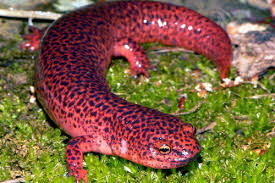 The NORTHERN RED SALAMANDER, or PSEUDOTRITON RUBER, was designated West Virginia’s official amphibian by House Concurrent Resolution No. 31, adopted by the Legislature on March 12, 2015. This resolution was introduced to the House of Delegates by the Romney Middle School eighth grade West Virginia Studies class, who proposed that, with its color pattern of colorful fall foliage and peppered black spots, the amphibian showcases the autumn colors of our state sugar maple tree and the coal mines that dot the region. Its five toes on each back foot and four toes on each of its front feet represent the 55 counties and eight major rivers of West Virginia.” — (WV Blue Book)
The NORTHERN RED SALAMANDER, or PSEUDOTRITON RUBER, was designated West Virginia’s official amphibian by House Concurrent Resolution No. 31, adopted by the Legislature on March 12, 2015. This resolution was introduced to the House of Delegates by the Romney Middle School eighth grade West Virginia Studies class, who proposed that, with its color pattern of colorful fall foliage and peppered black spots, the amphibian showcases the autumn colors of our state sugar maple tree and the coal mines that dot the region. Its five toes on each back foot and four toes on each of its front feet represent the 55 counties and eight major rivers of West Virginia.” — (WV Blue Book)
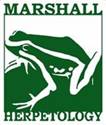 “
“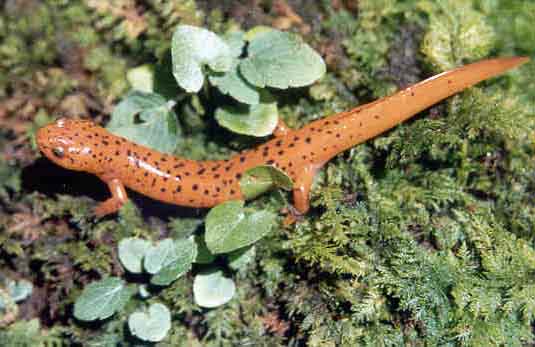 This is a rather stocky plump salamander, reaching upwards of 6 inches as adults. Young specimens, such as the one pictured, are generally a brilliant coral, or crimson red with black spots. As individuals age the bright red becomes darker and black spots become bigger and run together. The iris of the red salamander’s eye is yellow, . . . “
This is a rather stocky plump salamander, reaching upwards of 6 inches as adults. Young specimens, such as the one pictured, are generally a brilliant coral, or crimson red with black spots. As individuals age the bright red becomes darker and black spots become bigger and run together. The iris of the red salamander’s eye is yellow, . . . “
 “Herpetology at Marshall began in the 1930’s under the direction of Dr. N. Bayard Green. Since then, herpetology in WV has become widely known and studied due to the rich diversity of amphibians and reptiles in the region. Of the group, salamanders are the most diverse, with 34 species in the area. Dr. Thomas K. Pauley has conducted numerous herpetological studies since the 1960’s, focusing on research in WV. This site is designed to provide information about the herpetofauna in WV and the field studies and research of Dr. Pauley and his graduate students.”
“Herpetology at Marshall began in the 1930’s under the direction of Dr. N. Bayard Green. Since then, herpetology in WV has become widely known and studied due to the rich diversity of amphibians and reptiles in the region. Of the group, salamanders are the most diverse, with 34 species in the area. Dr. Thomas K. Pauley has conducted numerous herpetological studies since the 1960’s, focusing on research in WV. This site is designed to provide information about the herpetofauna in WV and the field studies and research of Dr. Pauley and his graduate students.”
Explore Marshall University’s “Herpetology Lab” Website
“Northern Red Salamander (rare!)”
“As you can tell, I am very excited about this find. This was a lifer find for me.” (1:11/2015/Tigerpuffer)

WV State Symbols – WV Official State Symbols
Official West Virginia State Symbols – Official WV State Symbols

